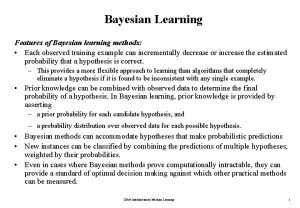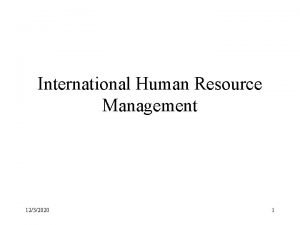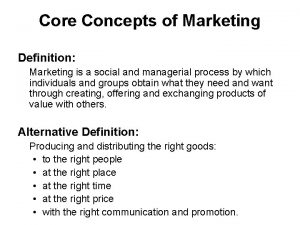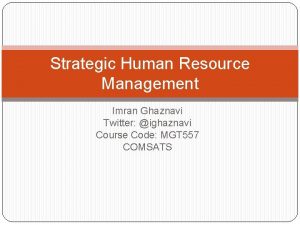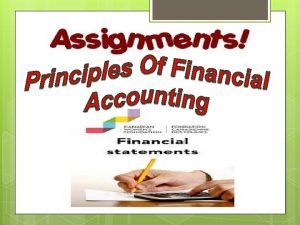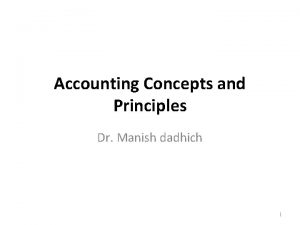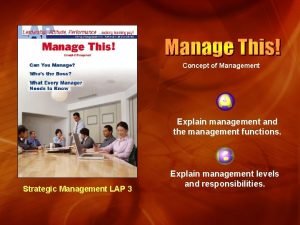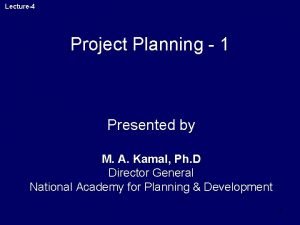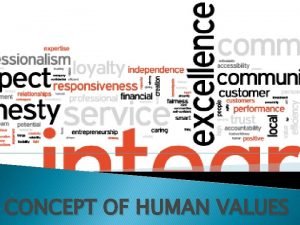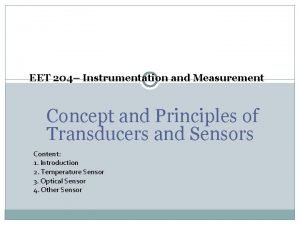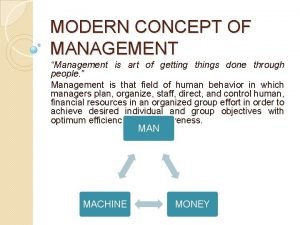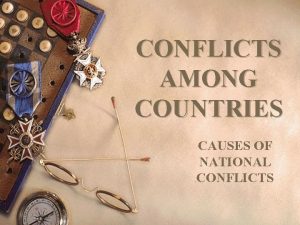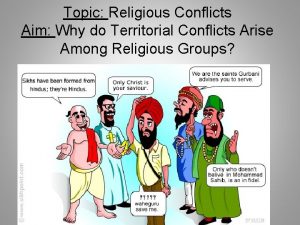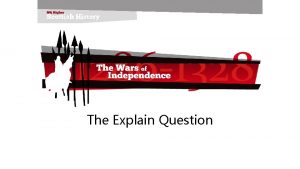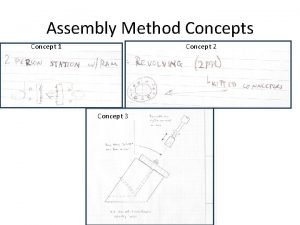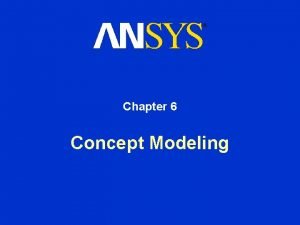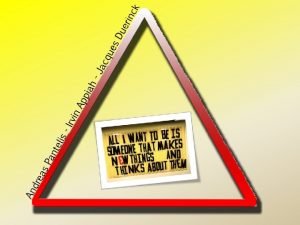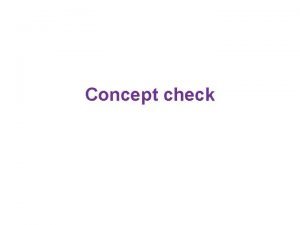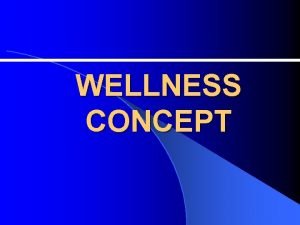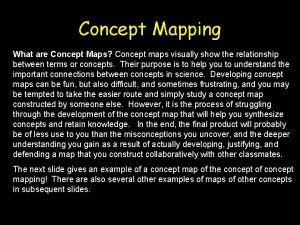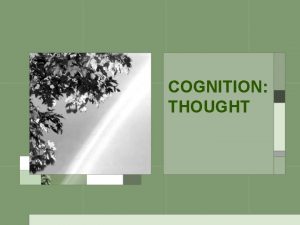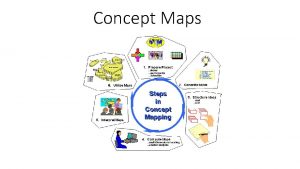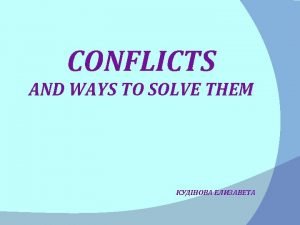Conflicts Aim to explain the concept of conflicts




















- Slides: 20

Conflicts Aim: to explain the concept of conflicts, causes of conflict and conflict management. Objectives : for students to understand the concept of conflicts, causes of conflict and conflict management and be able to relate findings in a ward environment.

Definition. Conflict can never be eliminated in organizations; however, conflict can be managed. Conflict arises when people feel strongly about something. Conflicts can take place between individual staff, within a unit, or within a department. They can be inter-unit and interdepartmental, affect the entire organization, or even occur between multiple organizations, between or within teams or units, or between an organization and the community.

Conflict is the ‘ tension arising from compatible needs, in which the actions of one frustrate the ability of the other to achieve a goal’ ( Boggs, 2003, p. 366 cited in Finkelman P. 80. ). There are three types of conflict: individual, interpersonal, and intergroup/ organizational ( Dessler, 2002, cited in Finkelman p. 80).

Ø The most common type of individual conflict in the workplace is role conflict. , which occurs when there is incompatibility between one or more role expectations. When staff do not understand the roles of other staff this can be very stressful for the individual and does affect work. Staff may be critical of each other for not doing some work activity when in reality it is not part of the role and responsibilities of that staff member, or staff may feel that another staff member is doing some activity that really is not his or her responsibility.

Ø Interpersonal conflict occurs between people. Sometimes this is due to differences and /or personalities, competition, or concern about territory, control, or loss. Ø Conflict also occurs between groups ( e. g. , units, services, teams, health care professional groups, agencies, community and a health care provider organization, and so on). ‘ Conflict is merely individuals or groups experiencing differences in views, goals, or facts that place them at opposite poles. It usually involves areas of differing expertise, practice, or authority’ ( Cesta, Tahan, & Fink, 1998, p. 68 cited in Finkelman, p. 80).

Causes of conflict v. Inadequate communication v Incorrect facts v Lack of trust v Unclear position descriptions v Misunderstanding of roles and responsibilities v Unclear or conflicted goals and objectives v Inadequate action plans v Directions

v Unstable leadership v Receiving direction from two or more bosses v Inability to accept change v Lack of leadership v Lack of or limited staff participation in decision making v Power issues.


Stages of Conflict There are four stages of conflict that help describe the process of conflict development. Latent conflict. This stage involves the anticipation of conflict. Competition for resources or inadequate communication can be predictors of conflict. Anticipating conflict can increase tension. This is when staff may verbalize, “ We know we are going to have a hassle with this” or may feel this internally. The anticipation of conflict can occur between units who accept one another’s patients when one unit does not think that the staff on the other unit is very competent and yet they must accept orders and patient plans from them.

Perceived conflict. This stage requires recognition or awareness that conflict exists at a particular time. It may not be discussed but only felt. Perception is very important as it can affect whether or not there really is a conflict, what is known about the conflict, and how it might be resolved. Felt conflict. This occurs when individuals begin to have feelings about the conflict such as anxiety or anger. Staff feel stress at this time. If avoidance is used at this time, it may prevent the conflict from moving to the next stage. Avoidance may be appropriate in some circumstances, the conflict may come up again and be more complicated. Trust plays a role here. How much do staff trust that the situation will be resolved effectively? How comfortable do staff feel in being open with their feelings and opinions/

Manifest conflict. This is overt conflict. At this time the conflict can be constructive or destructive. Examples of destructive behaviour related to the conflict are: (a) ignoring a policy, (b) denying a problem, (c) avoiding a staff member, or (d) discussing staff in public with negative terms. Examples of constructive responses to the conflict are : (a) encouraging the group to identify




The following are important in the prevention of conflict. Ø allocate resources fairly Ø clearly state expectations ( at all levels) Ø avoid sudden unexplained changes in processes Ø address staff fears ( Milgram, Spector, & Treger, 1999, p. 297 cited in Finkelman , p. 83). Since not all conflict can be prevented, staff and managers need to know how to manage conflict and resolve conflict when it exists. It is important to identify potential barriers that can make it more likely that a situation will turn into a conflict or will act as barriers to conflict resolution.

Ø deal with difficult issues when they occur. Do not put off interventions as this will only make the tension rise. Ø avoid behaviour that might lead to defensiveness or counteractions. Ø observe nonverbal communication that might indicate staff are upset. Ø treat others with respect, which will decrease defensiveness.

Ø avoid arguments. Sometimes people do need to vent, and as long as it is done appropriately and in a private place, it may be helpful in decreasing tension. Ø listen to each other Ø consider the phases of conflict resolution

Conflict management : Issues and Strategies Conflict management is critical in any organization. When conflicts arise then managers and staff need to understand conflict management issues and strategies. The major goals of conflict management are : 1. To eliminate or decrease the conflict 2. To meet the needs of the patient, family/ significant others, and the organization. 3. To ensure that all parties feel positive about the resolution so that future work together can be productive.

How do individual staff members cope with conflict? Not everyone responds to conflict in the same way, and individuals may vary in how they respond dependent upon the circumstances. Four typical responses to conflict are avoidance, accommodation, competition, and collaboration ( Boggs, 2003 cited in Finkelman p. 88). § Avoidance – occurs when a person is very uncomfortable and cannot cope with the anxiety effectively. This person will withdraw from the situation to avoid it.

Accommodation – The person tries to make the situation better by cooperating. The critical issue may not be resolved , or not be resolved to the fullest satisfaction. The goal is just to eliminate the conflict as quickly as possible. Competition- Power is used to stop the conflict. A manager might say, “ This is the way it will be”. This closes further efforts from others who may be in conflict with the manager. Collaboration – this is a positive approach, with all parties attempting to reach an acceptable solution, and in the end both sides feel that they won something. Collaboration often involves some compromise, which is a method used to respond to conflict.
 Outline brute force map learning algorithm
Outline brute force map learning algorithm Define hrm
Define hrm Explain the concept of layered task.
Explain the concept of layered task. Marketing core concepts
Marketing core concepts Example of direct manipulation
Example of direct manipulation Internal control structure
Internal control structure Explain the concept of hrm
Explain the concept of hrm Accounting convention
Accounting convention Explain money measurement concept
Explain money measurement concept Conceptual skills in management
Conceptual skills in management Explain bronsted lowry concept of acids and bases
Explain bronsted lowry concept of acids and bases Explain the concept of project appraisal
Explain the concept of project appraisal Boundary rules in accounting
Boundary rules in accounting Nano control memory
Nano control memory Eightfold path poster
Eightfold path poster Humanity value meaning
Humanity value meaning Explain money measurement concept
Explain money measurement concept Hsab principle
Hsab principle Modern concept
Modern concept Lời thề hippocrates
Lời thề hippocrates đại từ thay thế
đại từ thay thế
